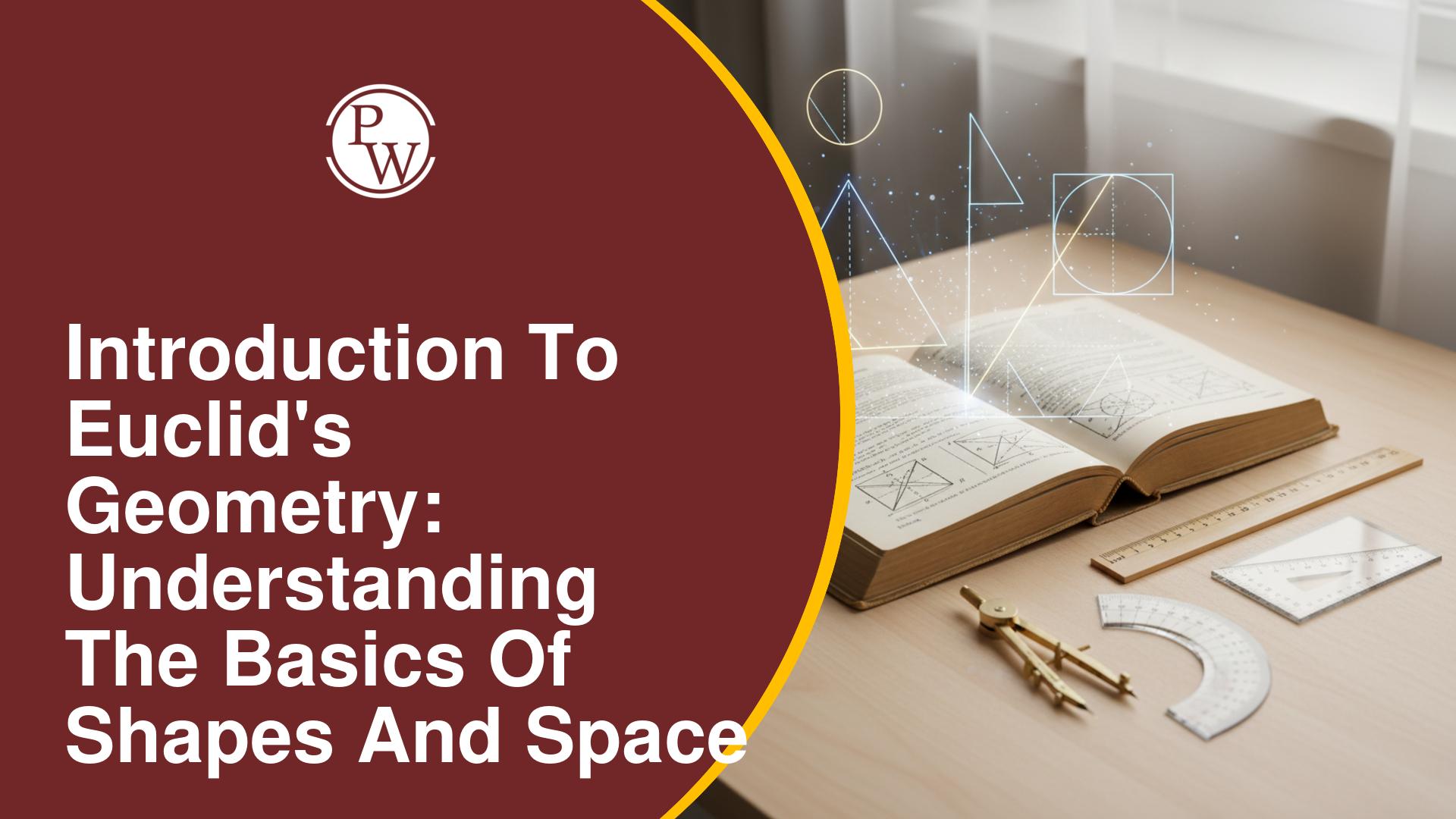
What Is Simple Harmonic Motion?
In Simple Harmonic Motion Formula , there are two key factors at play: a restoring force and a mass (or equivalent inertial element). A restoring force proportional to the displacement is generated, directing the object back towards its equilibrium. As the object moves closer to the equilibrium, this force decreases, and it increases as the object moves farther away. The acceleration of a particle executing simple harmonic motion is given by a(t) = -ω 2 x(t). The example of simple harmonic motion includes a mass attached to a spring and a pendulum. In the case of a mass-spring system, when the spring is compressed or stretched, the resulting oscillations exhibit simple harmonic motion. Similarly, a pendulum's swinging motion back and forth is also a form of simple harmonic motion when the angles are small.Simple Harmonic, Periodic And Oscillation Motion And Its Difference
Simple Harmonic Motion (SHM): Simple Harmonic Motion (SHM) refers to a type of periodic motion in which an object oscillates back and forth around an equilibrium position under the influence of a restoring force that is proportional to its displacement from the equilibrium position. Functions like sine or cosine. SHM is characterised by its amplitude (maximum displacement from the equilibrium), frequency (number of oscillations per unit time).Also Check - Transfer of Heat Formula
Periodic Motion: In a regular pattern over time. It doesn't necessarily have to be a simple harmonic motion. A periodic motion can exhibit various patterns. The defining feature of periodic motion is its repetition at regular intervals. The period of a motion is the length of time it takes for one full cycle to occur, and the frequency is the reciprocal of the period.Download PDF Simple Harmonic Motion Formula
Oscillation: Oscillation is a general term that describes any repetitive back-and-forth movement around a central point or position. It can include both simple harmonic motion and other types of periodic motion. Oscillation can occur in various systems, including mechanical systems like pendulums, electronic systems like alternating current (AC) circuits, and even in waves like sound and light.Also Check - Surface Tension Formula
Differences: The key differences between these terms are as follows: Type of Motion:- A type of periodic motion where the restoring force is directly proportionate to the displacement is known as simple harmonic motion (SHM).
- Periodic motion is a broader term that encompasses any motion.
- Oscillation is a general term for repetitive back-and-forth motion, which can include both periodic and non-periodic motions.
Also Check - Thermodynamics Formula
Restoring Force:- A restoring force that is proportionate to the displacement from equilibrium is a feature of SHM.
- Periodic motion may or may not involve a linear restoring force.
- Oscillation does not specify the nature of the restoring force.
- SHM is often mathematically described using trigonometric functions like sine or cosine.
- Periodic motion can be described using various mathematical functions, not necessarily limited to trigonometric functions.
- Oscillation is a broader concept and does not have a specific mathematical representation.
Also Check - Unit, Dimension & Vector Formula
Types Of Simple Harmonic Motion
SHM can be categorized into two main types: linear (translational) SHM and angular SHM. 1. Linear (Translational) Simple Harmonic Motion: In linear SHM, the motion occurs along a straight line. A spring that is stretched or compressed and then released. Mathematical Condition: The equation of motion for linear SHM can be expressed as follows: x ( t )= A ⋅cos( ωt + ϕ ) Where:- x ( t ) is the displacement of the object from its equilibrium position at time t.
- The oscillation's largest departure from equilibrium is represented by A, the oscillation's amplitude.
- ω is the angular frequency of the oscillation, related to the frequency f by ω =2 πf
- ϕ is the phase angle, which determines the initial phase of the motion.
- θ ( t ) is the angular displacement of the object from its equilibrium position at time t .
- θ 0 is the amplitude of angular displacement (maximum angle from the equilibrium position).
- ω and ϕ have the same meanings as in linear SHM.
Solutions Of Differential Equations Of SHM
The following are the solutions to the differential equation for the Simple Harmonic Motion:- x= A sin t
- x 0 = A sin
- x = A sin ( t+ )
Time Period And Frequency Of SHM
The time period and frequency of SHM are important characteristics that describe the motion.- Time Period (T): The time required for one full cycle of motion is the SHM time period. In other words, it is the amount of time required for the object to oscillate fully before returning to its initial position. The time interval is often represented by the letter "T" and is expressed in seconds.
- Frequency (f): The number of full cycles or oscillations that take place in a given period of time is the frequency of SHM. It is the time period's inverse, and it is frequently denoted by the letter "f." Hertz (Hz) is a unit of frequency measurement, where 1 Hz equals one cycle per second.
Phase In SHM
The condition of a vibrating or oscillating particle with respect to its displacement and vibration direction at any given instant is known as the phase of the particle. A particle's expression and location in relation to time. x = A sin (ωt + Φ) Where (ωt + Φ) is the phase of the particleEnergy In Simple Harmonic Motion (SHM)
There are two main forms of energy involved in SHM: potential energy and kinetic energy.- Potential Energy (PE): Potential energy in SHM is related to how far an object is moved from its equilibrium position. As the displacement changes, the potential energy changes as well. A mass-spring system, in which a mass is connected to a spring and is capable of oscillating around its equilibrium position, is the most typical example of SHM. This system's potential energy is determined by:
- PE = 0.5 kx 2
- PE is the potential energy.
- k is the spring constant, a measure of the stiffness of the spring.
- x represents the mass's deviation from its equilibrium position.
- Kinetic Energy (KE): Kinetic energy in SHM is associated with the object's velocity as it moves back and forth. The kinetic energy varies as the velocity changes. An oscillating object's kinetic energy is given by:
- KE is the kinetic energy.
- m is the mass of the object.
- v is the velocity of the object.
Simple Harmonic Motion Formula FAQs
What is Simple Harmonic Motion (SHM)?
An item oscillates back and forth around an equilibrium position in simple harmonic motion (SHM), a form of periodic motion, under the influence of a restoring force that is proportional to the object's displacement from the equilibrium position.
How does the mass affect SHM?
In a simple spring-mass system, the mass does not affect the frequency of SHM, but it does affect the amplitude. A larger mass will result in a smaller amplitude for the same amount of energy.
How does the spring constant affect SHM?
The spring constant affects the frequency of SHM. A higher spring constant will result in a higher frequency of oscillation.
What is the relationship between SHM and circular motion?
SHM can be thought of as a projection of circular motion onto a single dimension. The projection of uniform circular motion results in simple harmonic motion.
🔥 Trending Blogs
Talk to a counsellorHave doubts? Our support team will be happy to assist you!

Free Learning Resources
PW Books
Notes (Class 10-12)
PW Study Materials
Notes (Class 6-9)
Ncert Solutions
Govt Exams
Class 6th to 12th Online Courses
Govt Job Exams Courses
UPSC Coaching
Defence Exam Coaching
Gate Exam Coaching
Other Exams
Know about Physics Wallah
Physics Wallah is an Indian edtech platform that provides accessible & comprehensive learning experiences to students from Class 6th to postgraduate level. We also provide extensive NCERT solutions, sample paper, NEET, JEE Mains, BITSAT previous year papers & more such resources to students. Physics Wallah also caters to over 3.5 million registered students and over 78 lakh+ Youtube subscribers with 4.8 rating on its app.
We Stand Out because
We provide students with intensive courses with India’s qualified & experienced faculties & mentors. PW strives to make the learning experience comprehensive and accessible for students of all sections of society. We believe in empowering every single student who couldn't dream of a good career in engineering and medical field earlier.
Our Key Focus Areas
Physics Wallah's main focus is to make the learning experience as economical as possible for all students. With our affordable courses like Lakshya, Udaan and Arjuna and many others, we have been able to provide a platform for lakhs of aspirants. From providing Chemistry, Maths, Physics formula to giving e-books of eminent authors like RD Sharma, RS Aggarwal and Lakhmir Singh, PW focuses on every single student's need for preparation.
What Makes Us Different
Physics Wallah strives to develop a comprehensive pedagogical structure for students, where they get a state-of-the-art learning experience with study material and resources. Apart from catering students preparing for JEE Mains and NEET, PW also provides study material for each state board like Uttar Pradesh, Bihar, and others
Copyright © 2025 Physicswallah Limited All rights reserved.
Get App









